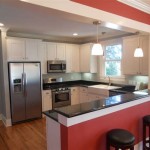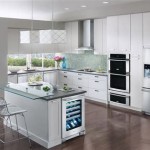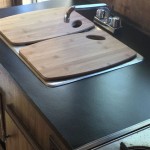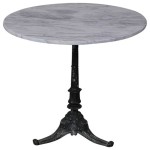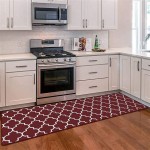What Is The Standard Length Of A Kitchen Worktop?
A kitchen worktop, also known as a countertop, is an essential element of any kitchen. It provides a surface for food preparation, cooking, and dining. The length of a kitchen worktop is a crucial factor to consider when designing or renovating a kitchen. The standard length of a kitchen worktop varies depending on factors such as the size of the kitchen, the layout, and personal preferences. This article explores the common lengths for kitchen worktops and provides insights to help you choose the right size for your kitchen.
Standard Worktop Lengths
Kitchen worktops are typically available in standardized lengths to facilitate installation and ensure consistency. The most common standard lengths for kitchen worktops are:
- 600mm (23.6 inches): This length is suitable for smaller kitchens or areas where space is limited. It is commonly used for single-sink worktops, breakfast bars, or small islands.
- 900mm (35.4 inches): This length is more versatile and is commonly used for double-sink worktops, prepping areas, or as part of a larger countertop run.
- 1200mm (47.2 inches): This length is suitable for larger kitchens or areas that require ample counter space. It is commonly used for worktops with multiple appliances, prep stations, or as a central island.
- 1800mm (70.9 inches): This length is ideal for spacious kitchens or for creating a large and continuous countertop surface. It is commonly used for custom worktops with multiple sinks, appliances, or for island units.
- 2400mm (94.5 inches): This length is extremely long and is suitable for exceptionally large kitchens. It is commonly used for expansive countertops, islands, or for creating a unified worktop run over a long distance.
It is important to note that these standard lengths are not set in stone. Many manufacturers offer custom-sized worktops to cater to specific kitchen designs and requirements. Therefore, you can choose a length that best suits your kitchen's layout and needs.
Factors Affecting Worktop Length
The length of a kitchen worktop is influenced by various factors, including:
1. Kitchen Size
The overall size of the kitchen is a primary factor in determining the worktop length. Smaller kitchens may require shorter worktops to save space, while larger kitchens can accommodate longer worktops for extended cooking and prepping areas. It is essential to consider the dimensions of your kitchen and the available space before choosing worktop lengths.
2. Kitchen Layout
The layout of your kitchen will also impact the length of your worktops. A galley kitchen, for example, may require narrower worktops to optimize space. An L-shaped kitchen, on the other hand, can accommodate longer worktops to create a larger countertop run. Analyzing your kitchen layout and identifying the best placement for worktops is crucial to determine their optimal length.
3. Number of Appliances
The number of appliances in your kitchen will significantly influence the length of your worktops. If you have multiple appliances, such as a dishwasher, oven, and refrigerator, you will need longer worktops to accommodate them. Consider the space required for each appliance and ensure that your worktops provide sufficient counter space for their installation.
4. Worktop Functionality
The functionality you desire from your worktop will impact its length. If you are passionate about cooking and require a large worktop for prep and cooking, you will need a longer worktop. However, if your kitchen is primarily focused on casual dining, a shorter worktop may suffice. Evaluating your worktop's intended use will help guide the selection of an appropriate length.
Tips for Choosing Worktop Length
When choosing the length of your kitchen worktops, consider the following tips:
- Measure your kitchen accurately: Before purchasing any worktops, measure the available space carefully. Ensure you account for existing appliances, sinks, and any other fixtures that will be installed.
- Plan your layout strategically: Create a detailed floor plan of your kitchen, outlining the placement of worktops, appliances, and other furniture. This will help you determine the optimal length for each worktop run.
- Consider ergonomics: Ensure that the worktops are at a comfortable height for all users. A standard height for kitchen worktops is typically around 90-95 cm (35.4-37.4 inches). However, it is important to consider the height of the individuals who will be using the kitchen. For those with limited mobility, a lower worktop may be more suitable.
- Think about future needs: Consider any future changes you may want to make to your kitchen, such as adding new appliances. Choosing worktops with enough space for potential additions will make your kitchen more adaptable.
Remember that the length of your kitchen worktop is a personal choice. It is important to select a length that meets your specific needs and preferences. Consult with a kitchen designer or a professional contractor for expert advice and guidance on choosing the optimal worktop lengths for your kitchen.

Kitchen Worktop Height Everything You Need To Know House Of Worktops

How To Measure For Your New Worktop Iworktops Co

M Seven Kitchen Worktop Stala

Kitchen Worktop Height Depth Wall Unit Dimensions Guide Multiliving Scavolini London

Understanding Kitchen Worktop Height And Depth Dimensions

How To Ensure An Accurate Kitchen Worktop Quote Gemini Worktops

Im Updating My Kitchen How Much Do Granite And Quartz Worktops Cost Stone Culture

Kitchen Worktop Height Depth Wall Unit Dimensions Guide Multiliving Scavolini London

Diy Worktop Templating Es 4graniteworktops Co

What Gap Do I Need Between The Worktop And Bottom Of Wall Units
Related Posts




